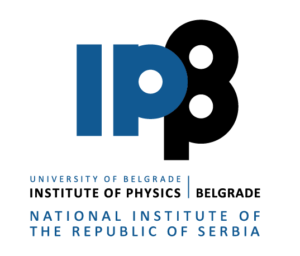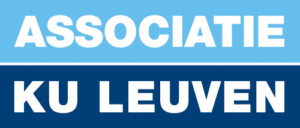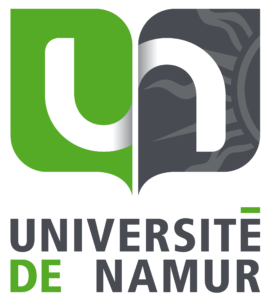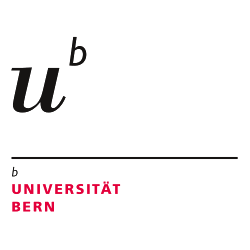
together we can
6 countries / 10 institutions
“Science knows no country because knowledge belongs to humanity, and is the torch which illuminates the world.”
― Louis Pasteur ―
The Institute of Applied Sciences and Intelligent Systems (ISASI) “Eduardo Caianiello” was created as the Institute of Cybernetics in 1968 by the physicist Eduardo Caianiello, who had the pioneering idea to join different scientific disciplines and approaches to the study of cybernetics. Today, ISASI carries out research in the fields of Physics, Information Sciences, Neurosciences, and Biology. The Institute has great potential to investigate problems that require a multidisciplinary approach, where the different methodological and technological expertise can contribute in synergy to achieve and transfer new knowledge. ISASI is part of the Department of Physical Sciences and Technologies of Matter (DSFTM) of the National Research Council (CNR).
CNR-ISASI is the Coordinator of the ARTEMIS project, thus it is heavily involved in project management and coordination activities. From a scientific point of view, the Institute will be involved in the optical characterizations of the new quantum materials developed within the project. In particular, studies of linear spectroscopy, holographic characterization, and measurement of non-linear optical properties will be carried out. The ISASI staff involved are Maria Antonietta Ferrara as Project Coordinator, Luigi Sirleto as Researcher, and Simona De Luca as a member of the General Management Committee.
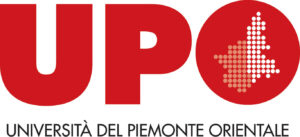
The University of Eastern Piedmont “Amedeo Avogadro” (Università del Piemonte Orientale “Amedeo Avogadro” – UPO) was founded on 31 July 1998, laying its roots on structures, assets, equipment, staff, students, and legal entities from the University of Turin according to the decentralization and university autonomy model created in the 1980s and 1990s. UPO is based on the three hub cities of Alessandria, Novara, and Vercelli and its vision and strategy can be considered an expression of the whole territory of Eastern Piedmont, in the North of Italy. Since its foundation, UPO has been able to attract an ever-growing number of students up to around 17000 in 2023, including 10% of foreign students. UPO consists of 8 Departments that carry out research and teaching activities in fields spanning from physical and life sciences to human sciences and medicine.
UPO has the role of co-coordinator of ARTEMIS and leader of WP2. The scientific contribution of UPO to the project regards the design, synthesis, and full characterization of novel molecular and hybrid organic-inorganic lanthanide-based materials with specifically tailored emission properties in the visible and near-infrared spectral range. Moreover, UPO will perform photophysical studies through conventional steady-state and time-resolved photoluminescence spectroscopy to select novel molecular materials to be proposed as single photon sources. The UPO unit is led by Prof. Flavia Artizzu and involves Dr. Ivana Miletto and Prof. Elisabetta Gabano as Researchers.
The Institute of Physics Belgrade (IPB), a National Institute of the Republic of Serbia, is a first-class research institution dedicated to the study of physics and related disciplines. Founded in 1961, the Institute of Physics was a product of a surge in physics research in postwar Yugoslavia to unify all non-nuclear physics research endeavors into a single institution. Owing to its unique spirit, state-of-the-art research, and fruitful innovations, the Institute of Physics is recognized today in Serbia as a leading national research institution, in the region as a center of excellence, and in Europe and globally as a trustworthy partner and a relevant research center. The Institute of Physics hosts four national and European Centers of Excellence. The groups and laboratories, that have gained this prestigious status, focus their work and prioritize certain research topics. Research is conducted in 25 laboratories equipped for high-grade work in physics and related fields. In addition, it is the home of two spin-off companies and an Innovation Center.
The IPB team that participates in the ARTEMIS project belongs to the Nanophotonics lab, a part of the Photonics Center, one of the four Centers of Excellence from the Institute of Physics Belgrade. The team, led by Prof. Branko Kolaric, has the role of co-coordinator of the ARTEMIS project and a leader of WP4 – a work package that focuses on the quantum measurements (characterization) of the new single and entangled photon sources. The IPB team participates in holographic, linear, nonlinear (experimental and theoretical), and quantum characterization of the proposed new materials.
KU Leuven (Katholieke Universiteit Leuven) is a university dedicated to education and research in nearly all fields. Its fifteen faculties offer classes and degree-granting academic programs, whilst research activities are organized by departments and research groups. These faculties and departments are clustered into three thematic groups: Humanities and Social Sciences, Science, Engineering and Technology (SET), and Biomedical Sciences. Each of these groups sponsors its own doctoral school for organizing and awarding doctoral degrees. KU Leuven boasts thirteen campuses, spread across 10 cities in Flanders (https://www.kuleuven.be/english/about-kuleuven).
The KUL team, the group of Prof. Thierry Verbiest, belongs to the chemistry department and is the lead participant for work package 3 focusing on the characterization of developed materials with linear and nonlinear optical techniques, holographic measurements, and computational modeling.
Ministero delle Imprese e del Made in Italy – MIMIT, (En. Ministry of Enterprises and Made in Italy) is a government ministry of the Italian Republic, in charge of supporting enterprises and ensuring the protection of the quality, innovation, and excellence of Made in Italy. MIMIT is based in Rome within the historical city center building of Palazzo Piacentini. Areas of competence of MIMIT include industry, enterprises, telecommunications, intellectual properties, and consumer protection. With this framework, the newborn Department of Digital, Connectivity and New Technologies of MIMIT plays the role of policy maker to support industries in developing and deploying innovative technologies.
In ARTEMIS, MIMIT leads the WP5 of “Dissemination, Exploitation, and Communication”, focusing on the creation of links and opportunities between the results from the research partners and the stakeholders, including EU policymakers, standardization, and industrial technical boards. Dr. Stefano Luvini, Executive Manager from the DG Digital and Telecommunications leads the WP5 of ARTEMIS and the MIMIT team, which involves professionals from the Dept. of Digital, Connectivity and New Technologies and the Cabinet Office of the Minister.
The University of Cagliari (Università degli Studi di Cagliari – UNICA) founded in 1620, is the largest public university in Sardinia and with about 25.000 students is classified as a medium-sized university in Italy. UNICA offers comprehensive and unique public education, cutting-edge research, and multi-discipline education programmes for the student community. The University of Cagliari is a point of reference for higher education and research activities, it is composed of 6 faculties, 15 departments, 1 university hospital, and about 100 undergraduate, graduate, and postgraduate programmes covering almost every field of knowledge. With about 1000 professors and about 1000 administrative personnel, it is one of the largest public administration and working communities in the area.
UNICA contributes to ARTEMIS through the group of Prof. Luca Pilia from the Department of Mechanical, Chemical, and Materials Engineering. It focuses on the synthesis and characterization of ligands with O, N, and S as donor atoms, and their complexes with transition metals, showing second and third-order non-linear optical properties. The metal complexes are characterized by several techniques such as UV-Vis-NIR and FT-IR spectroscopies, spectroelectrochemistry, and electrochemistry. Moreover, calculations by density functional theory (DFT) and time-dependent DFT methods to investigate the electronic structure and to understand the structure-properties relationship of the prepared compounds, are also employed.
CINBIO – Center for Research in Nanomaterials and Biomedicine, hosts research in the fields of nanomaterials and biomedicine at the University of Vigo. In 2016, it was consolidated as a Singular Research Center within the Galician University System and recognized as a Center of Excellence by the Government of Galicia since that date. CINBIO promotes development in the synthesis, characterization, and application of nanomaterials, both for the advancement of fundamental science and their use in applications in fields including biomedicine. As such, the center brings together researchers from different areas and lines of research into common infrastructure to facilitate cooperation. The human team making up the center is strongly multidisciplinary, which provides a competitive advantage in addressing challenges in the complex fields of biomedicine and nanotechnology. CINBIO‘s goal is to create a common structure that allows for efficient coordination of such multidisciplinary work and facilitate resource acquisition, to multiply the impact of the research output of the groups under its umbrella.
The contribution of CINBIO-UVIGO to ARTEMIS will consist of the preparation of the plasmonic substrate to enhance the emission of the lanthanide-based fluorophores. Plasmonic nanostructures couple strongly with light and enhance absorption and emission of light from nearby molecules, allowing for a low number of sparse emitters to generate a sufficient signal, thus providing a suitable platform to design single-photon sources. This work will be led by Prof. Miguel A. Correa-Duarte, head of the research group TeamNanoTech (TNT). This group gathers researchers with expertise in different aspects of the study of plasmonic materials, from their synthesis to their deployment for applications in optics and photochemistry.
The University of Namur (UNamur) is situated in the heart of the historic centre of the city of Namur in Belgium. The UNamur welcomes over 4,900 students in seven Faculties. The mission of the University of Namur is to educate students and researchers as responsible actors in society. In its research mission, carried through 11 transdisciplinary research institutes, the University of Namur favours subjects which combine excellence and long-term concern. It pays specific attention to Interdisciplinarity and considers the human and social stakes of science and technology. The University of Namur places the human being in the heart of its inherited Jesuit traditional values: openness, excellence, liberty and sustainability. Together with the 7 faculties, professors and researchers work on multidisciplinary research projects with teams established worldwide.
UNamur’s contribution to the ARTEMIS project will be provided by the group of Prof. Yves Caudano, research associate of the Fund for Scientific Research F.R.S.-FNRS, member of the NaXys and NISM Institutes and the UR-LLS (Lasers and Spectroscopies Laboratory) research unit. It will focus on the development of customized optical set-ups for advanced spectroscopic and quantum analyses based on linear and non-linear optics, together with their advanced theoretical modeling, and on the design of protocols exploiting quantum weak measurements and ARTEMIS quantum lights sources to build ultra-sensitive analysis devices operating at very low light intensities in the quantum regime.
The Centrale Méditerranée, formerly known as École Centrale de Marseille is a leading graduate school of engineering (or Grande école of engineering) located in Marseille, the second largest city in France. Centrale Méditerranée was created in 2006 by the merging of different previous institutions and has its origins in the École d’Ingénieurs de Marseille founded in 1891. It is one of the prestigious Centrale Graduate Schools (Paris, Lyon, Lille, Nantes, Marseille) and a member of the TIME (Top Industrial Managers for Europe) network. Since its creation, Centrale Méditerranée trains engineers, recruited since 2004 through a highly competitive exam shared with the other Centrale Graduate Schools.
Prof. Thomas Durt, the contact person of the Artemis project in Marseille, is a physicist specialized in fundamental aspects of quantum theory, quantum optics, and quantum information theory. He performs his research at the Fresnel Institute and teaches quantum physics, quantum optics, and quantum information at Ecole Centrale de Marseille. He is involved in the majority of the work packages that deal with the quantum properties of new light sources developed in the framework of the project. In this context, a Ph.D. is scheduled from autumn 2024 to autumn 2027 in order to carry out fluorescence experiments with these new light sources and fluorophores. The measurements will be carried out in collaboration with the experimentalist Jerome Wenger (Fresnel). The ECM will finance fifty percent of this Ph.D. Another Ph.D. student, financed by the Quantedu project (linked to the French Grand Plan Quantique) will also carry out fluorescence measurements during the same period, with more conventional light sources (e.g. quantum dots). A postdoc is also expected to join our informal team in Marseille during the same period.
The University of Bern (UBERN) is the fourth largest university in Switzerland, with 19,640 students and doctoral students. UBERN has 8 faculties with more than 150 institutes and 10 inter- and transdisciplinary centers of excellence. UBERN hosts several internationally recognized research centers, such as the Oeschger Centre for Climate Change Research, the ARTORG Centre for Biomedical Engineering Research, and several National Centers of Competence in Research.
UBERN contributes to ARTEMIS through the group of Prof. André Stefanov from the Institute of Applied Physics. It will focus on the characterization of the quantum emission properties of the new materials, single photons, and entangled photon pairs. The applications of those novel sources for new quantum metrology schemes, such as quantum spectroscopy will be investigated.

